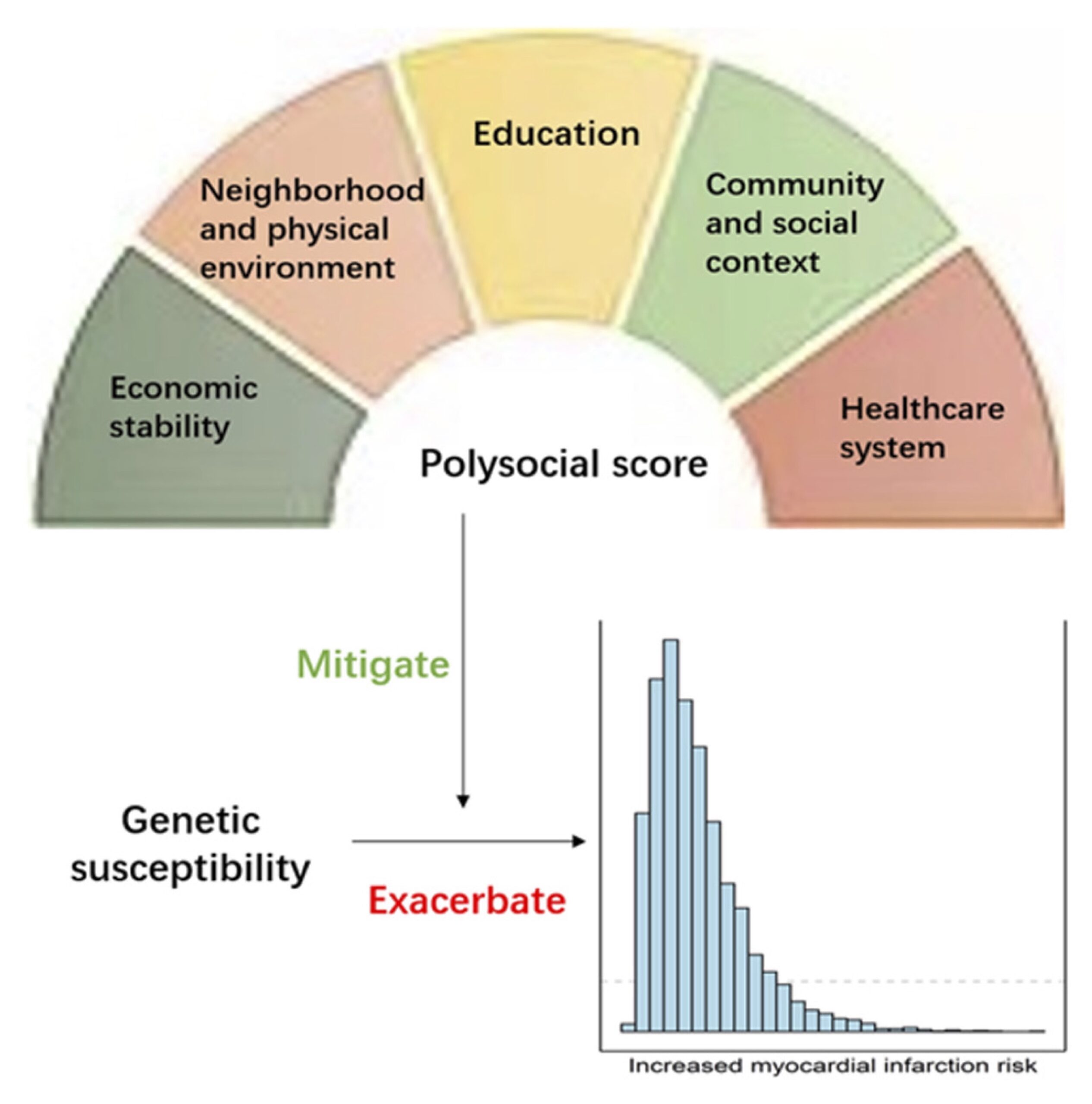Myocardial infarction (MI) is a major clinical and public health problem worldwide. The prevalence of MI increases dramatically with age, placing a high burden on middle-aged and older adults, their families, the healthcare system, and society.
Based on data from the Health and Retirement Study (HRS), a team led by Assistant Professor Chenkai Wu and Professor Lijing Yan from the Global Health Research Center at Duke Kunshan University has published a study in the Journal of the American Heart Association in which they found that genetic susceptibility and social environment interplay in the development of MI in middle-aged and older adults.

The Health and Retirement Study is a biennial longitudinal cohort study conducted every two years, which looks at a nationally representative sample of non-institutionalized residents in the U.S. aged 50 and above. The study collects information about participants’ health and socioeconomic status.
“We developed a Polysocial Score to help us understand how various social factors work together to influence the health of older adults. We introduced the Score tool into the study and found the joint effect of genetic and social environmental risks in the development of MI among older adults. For those with a high/intermediate genetic risk of MI, living in a favorable social environment is particularly important.” said Dr. Chenkai Wu, corresponding author of the paper.
The Polysocial Score was developed based on 14 social determinants across five domains: economic stability, neighborhood and physical environment, education, community and social contexts, and health care system. This polysocial score is based on the HRS data from 7,383 adults aged ≥65 years. Our previous research has shown that this score can help us predict the all-cause mortality for Americans aged ≥50 years.

Interestingly, the research team found that various factors, such as income, level of education, and the environment in which people live, can influence the risk of developing MI. The influence of these social factors is especially important for people who are genetically more prone to MI.
Suppose a person is genetically at moderate risk for MI but lives in an environment with a low polysocial score (e.g., poor economic status, fewer educational resources, less desirable living conditions). In that case, their chances of getting MI are much higher – nearly double – than those who score high.
But if a person doesn’t score low on the polysocial score, even if they are genetically at moderate or high risk, their chances of getting MI are only slightly higher. This tells us that improving the social environment, such as increasing people’s income and providing good educational resources, may help people who are genetically predisposed to MI reduce their risk.

“While previous studies have explored the interaction between genetic susceptibility and modifiable lifestyle factors, the team led by Dr. Chenkai Wu has opened up a new line of research focusing on whether and how the equally modifiable social environment could interact with genetic variation. The findings suggest that developing interventions to improve the social environment may be important for adults with a relatively high genetic risk of MI,” said Prof. Lijing Yan.
“This research idea can be extended and applied to other non-communicable diseases studies, and we are also developing a Polysocial Score for China’s elderly population regarding the economic, social, and cultural characteristics of China in the hope that it will provide new tools for the study of China’s healthy aging in the future,” said Dr. Chenkai Wu.

